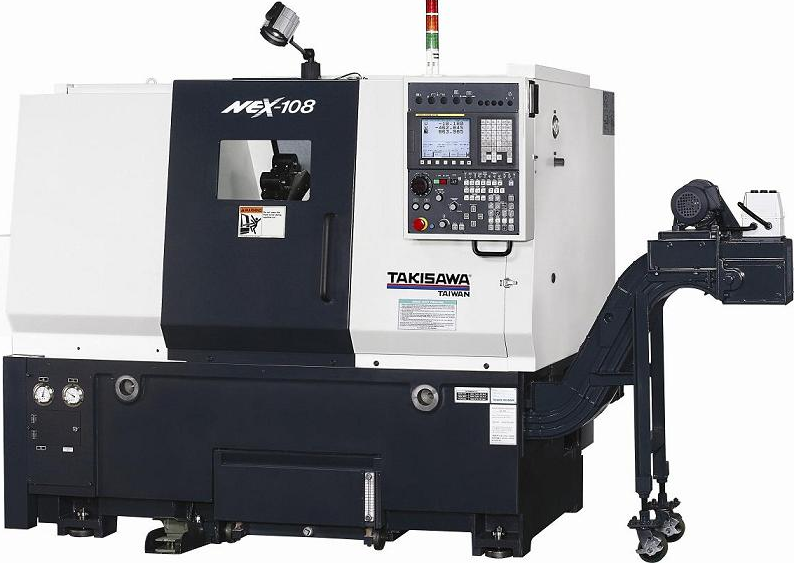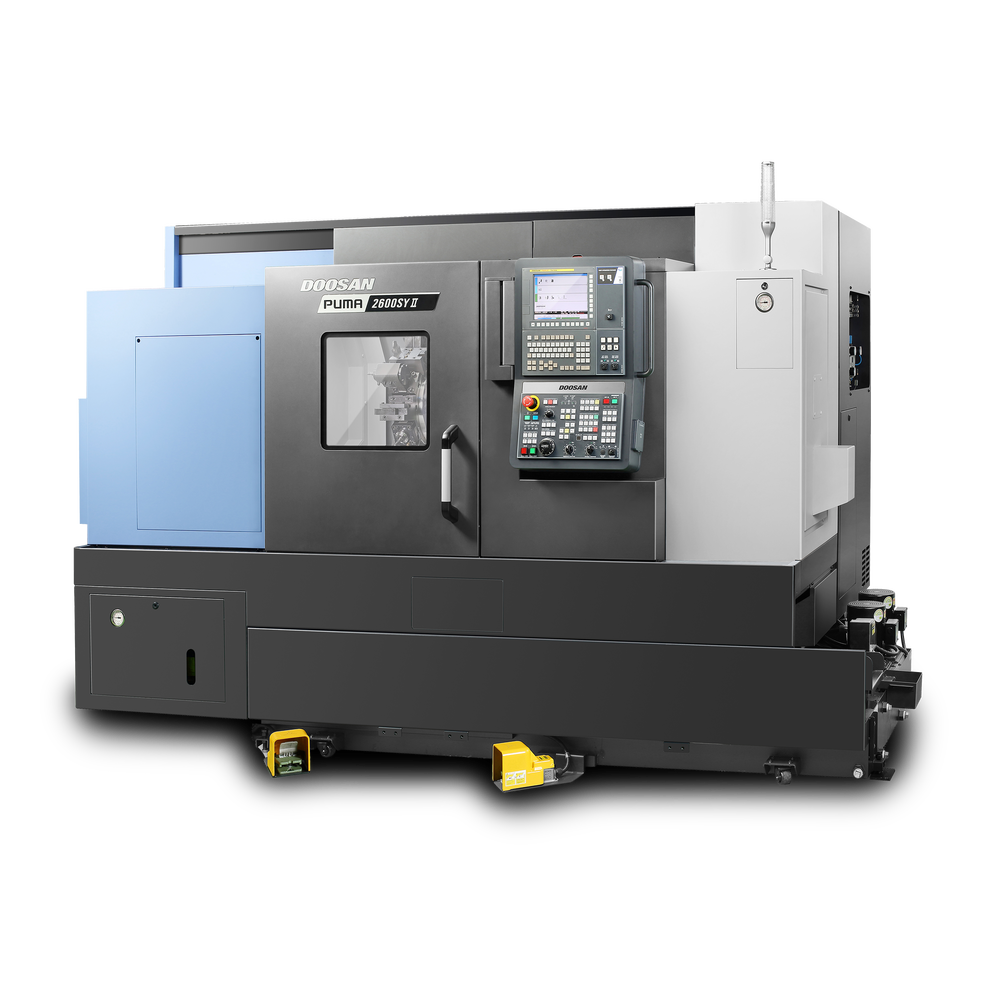
Turning Machines
Search and compare a comprehensive list of Turning Machine Models and Builders
Essential Reading
A bar turning machine, also known as a bar feeder or bar-fed turning machine, is a type of CNC (computer numerical control) lathe designed to process long, cylindrical bars of metal or other materials. These machines are commonly used in high-volume production environments for manufacturing precision parts.
The primary feature of a bar turning machine is its ability to automatically feed a long bar of material into the machine through a bar feeder mechanism. The bar feeder holds the bar stock and advances it into the lathe's spindle in a controlled manner, providing continuous, uninterrupted material supply. This allows the lathe to perform multiple machining operations, such as turning, facing, threading, drilling, and boring, on the workpiece without the need for manual intervention.
Once a section of the bar has been machined, the bar feeder advances the bar forward, allowing the next section to be worked on. This process continues until the entire bar has been processed, after which the machine operator replaces the bar with a new one to continue production. Bar turning machines are widely used in industries such as automotive, aerospace, and manufacturing, where precision parts are required in high volumes.
-
Advantages Of Bar Turning in High-Volume Production Settings:
- Increased productivity: The automatic feeding of material allows for continuous operation, reducing downtime and increasing overall production rates.
- Improved precision and repeatability: CNC control ensures high levels of precision and consistency in the machining process, resulting in higher-quality parts.
- Reduced material waste: The continuous feeding process allows for efficient use of material, reducing waste and overall production costs.
- Labor savings: Automation reduces the need for manual intervention, freeing up operators for other tasks and potentially reducing labor costs.
-
Types of Bar Turning Machines:
- Chucker: A chucker lathe, more commonly referred to as a "chucker" or "chuck lathe," is a type of lathe machine primarily used for machining cylindrical or disc-shaped workpieces. It is called a chucker lathe because it uses a chuck to hold the workpiece in place during machining operations. Chucker lathes are designed to perform multiple operations in a single setup, which makes them ideal for high-volume production environments. Some of these operations include turning, facing, drilling, threading, boring, and reaming. They are commonly used in industries such as automotive, aerospace, and manufacturing, where precision and efficiency are crucial.
- Universal: A universal turning machine, also known as a universal lathe, is a versatile type of lathe designed to perform a wide range of machining operations on various workpiece sizes and shapes. Universal lathes are used for turning, facing, threading, drilling, boring, and other machining processes on cylindrical, conical, or irregularly shaped workpieces. The term "universal" in the context of turning machines indicates the machine's ability to adapt to various machining requirements and workpiece geometries.
-
Features of Universal Turning Machines:
- Adjustable spindle speeds: Universal lathes typically have multiple spindle speeds, which can be adjusted to suit the material being machined and the specific operation being performed.
- Adjustable feeds and speeds: These machines allow for the adjustment of the cutting tool's feed rate and speed, providing flexibility to accommodate various materials and machining conditions.
- Tailstock: A tailstock is a movable component that can support the workpiece during machining operations, especially when working with longer workpieces or performing operations like drilling and reaming.
- Tool post: A tool post is used to mount and position cutting tools on the lathe. Universal turning machines often have a quick-change tool post, which enables the operator to quickly and easily change tools during the machining process.
- Taper turning attachment: This optional accessory allows for the machining of tapered surfaces, either externally or internally, by altering the movement of the cutting tool relative to the workpiece.
-
Swiss-Type: A Swiss-type machine, also known as a Swiss-type lathe or Swiss-style
turning machine, is a specialized type of CNC (computer numerical control) lathe designed for
machining small, complex, and high-precision parts, often in high-volume production environments.
The name "Swiss-type" originates from the Swiss watchmaking industry, where these machines were first
developed to manufacture intricate watch components. Swiss-type machines are characterized by their
unique guide bushing system, which provides support to the workpiece very close to the cutting tool,
reducing deflection and vibrations during machining. This allows for the production of parts with tight
tolerances and excellent surface finishes. In a Swiss-type lathe, the bar stock is fed through a guide
bushing, which holds the workpiece steady and allows the cutting tool to move along the bar as it rotates.
The cutting tools are mounted on a sliding headstock that moves longitudinally along the Z-axis while
the bar stock remains stationary. This arrangement differs from a conventional lathe, where the workpiece
moves while the cutting tool remains stationary. Swiss-type machines are particularly suited for machining
long, slender workpieces that would otherwise be difficult to support and maintain accuracy in a
conventional lathe. They are commonly used in industries such as aerospace, medical, electronics, and
automotive for manufacturing small, high-precision components like screws, pins, connectors, and implants.
-
Key advantages of Swiss-type machines include:
- High precision: The guide bushing system minimizes deflection and vibration, allowing for tight tolerances and superior surface finishes.
- Increased productivity: Swiss-type lathes can perform multiple operations simultaneously, reducing cycle times and increasing overall productivity.
- Reduced material waste: The guide bushing supports the workpiece close to the cutting tool, which enables efficient use of material and reduces waste.
- Flexibility: Swiss-type machines can accommodate a wide range of cutting tools and attachments, enabling them to perform complex operations in a single setup.
-
Key advantages of Swiss-type machines include:
|
Specifications
|
DN Solutions
Lynx 2600SY
|
Takisawa-Taiwan
NEX-110M(Y)
|
DN Solutions
PUMA 2600SY (II)
|
DN Solutions
PUMA 2600SYB (II)
|
|---|---|---|---|---|

|

|

|

|
|
|
Operation Type
|
|
CNC
|
|
|
|
HP
|
25
|
25
|
30
|
30
|
|
Axes
|
|
3
|
|
|
|
Spindles
|
2
|
1
|
2
|
2
|
|
Direction
|
Horizontal
|
Horizontal
|
Horizontal
|
Horizontal
|
|
Style (Bar, Swiss, Chucker, Universal)
|
|
B C U
|
|
|
|
Mill-Drill
|
|
Optional
|
|
|
|
Number of Simultaneous Tools <Max>
|
|
1
|
|
|
|
Main Spindle Turning Diameter <Max>
|
15 in
|
16 in
|
15 in
|
15 in
|
|
Main Spindle Turning Length <Max>
|
24 in
|
25 in
|
30 in
|
28 in
|
|
Main Spindle Chuck Diameter
|
12 in
|
10 in
|
10 in
|
12 in
|
|
Main Spindle Bar Diameter
|
3 in
|
3 in
|
3 in
|
4 in
|
|
Main Spindle Swing <Max>
|
|
22 in
|
|
|
|
Main Spindle Headstock1 Top Speed
|
3500
|
3500
|
4000
|
2800
|
|
Subspindle
|
Standard
|
None
|
Standard
|
Standard
|
|
Tail Stock Quill And Body
|
|
Standard
|
|
|
|
Mounting Type Primary
|
|
Turret
|
|
|
|
Mounting Type Secondary
|
|
|
|
|
|
Number of Stationary Turning Tools Primary <Max>
|
|
12
|
|
|
|
Number of Rotary Tools Primary <Max>
|
12
|
12
|
12
|
12
|
|
Rotary Tool HP Primary
|
|
8
|
|
|
|
Rotary Tool RPM Primary
|
|
5000
|
|
|




